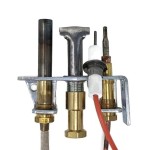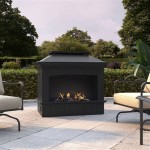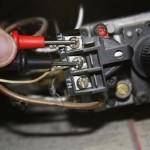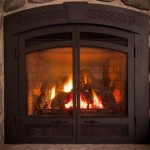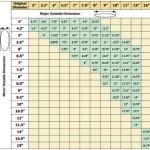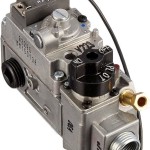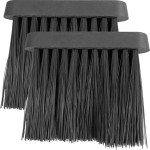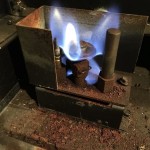Fireplace Without Chimney: A Guide to Ventless and Vented Options
Fireplaces have been a source of warmth and ambience for centuries, but traditional fireplaces rely on a chimney to vent smoke and dangerous gases. In modern homes, however, installing a chimney can be impractical or even impossible. Fortunately, there are now fireplaces that don't require a chimney, offering the same level of comfort and aesthetics without the hassle.
Ventless Fireplaces
Ventless fireplaces are the most convenient option if you don't have a chimney. They use propane or natural gas as fuel and burn cleanly with no emissions, eliminating the need for a flue or chimney. However, ventless fireplaces require proper ventilation to prevent the buildup of carbon monoxide and other harmful gases. They should only be used in well-ventilated spaces with a minimum ceiling height of 8 feet.
Vented Fireplaces
Vented fireplaces, on the other hand, require a vent or chimney to exhaust smoke and gases. They are available in both gas and wood-burning models. Gas-fired vented fireplaces are relatively easy to install, as they only require a gas line and a vent pipe. Wood-burning vented fireplaces, however, require a more complex installation process, including a chimney or a direct vent system that runs horizontally through an exterior wall.
Types of Vented Fireplaces
There are two main types of vented fireplaces: direct vent and indirect vent. Direct vent fireplaces have a sealed combustion chamber and use outside air for combustion, eliminating the need for a traditional chimney. They also have a higher efficiency rating than indirect vent fireplaces.
Indirect vent fireplaces use room air for combustion and exhaust the gases through a vent pipe that runs up the chimney or through an exterior wall. They are less efficient than direct vent fireplaces but provide more radiant heat.
Benefits of Fireplaces Without Chimney
Fireplaces without chimney offer several advantages over traditional fireplaces, including:
- Convenience: No need to install or maintain a chimney.
- Safety: Ventless fireplaces eliminate the risk of carbon monoxide poisoning, while vented fireplaces safely exhaust dangerous gases.
- Flexibility: Can be installed in any room with proper ventilation or a vent pipe.
- Aesthetics: Provide the same ambiance as traditional fireplaces.
- Energy efficiency: Vented fireplaces have a higher efficiency rating than open fireplaces.
Factors to Consider
When choosing a fireplace without a chimney, consider the following factors:
- Fuel type: Propane or natural gas for ventless fireplaces, gas or wood for vented fireplaces.
- Ventilation: Adequate ventilation is crucial for ventless fireplaces.
- Efficiency: Direct vent fireplaces are more efficient than indirect vent fireplaces.
- Installation cost: Vented fireplaces typically have higher installation costs than ventless fireplaces.
- Maintenance: Regular maintenance is necessary for both ventless and vented fireplaces.
Conclusion
Fireplaces without chimney are a versatile and convenient alternative to traditional fireplaces. They offer the same warmth and ambiance without the need for a chimney, making them a practical choice for modern homes. Whether you choose a ventless or a vented fireplace, it's important to consult with a qualified professional to ensure safe and proper installation.

How To Vent A Gas Fireplace Without Chimney Vertical Care

Do You Need A Chimney For Fireplace Direct Fireplaces

Fires Choices For Homes Without Chimneys Wakefords Fireplaces And Stoves

Install A Fireplace Without Chimney Ventless

No Chimney Problem Blog

Do You Need A Chimney For Fireplace Direct Fireplaces

I Build Having No Chimney Is Barrier

Can I Have A Fireplace Without Chimney Vertical Care

Can I Have A Stove Without Chimney Stovax Gazco

Stoves And Fires For Homes Without A Chimney Dovre
Related Posts

